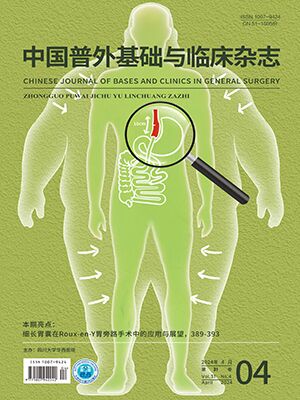【Abstract】Objective To investigate the production and possible significance of plasma trypsinogen activation peptides (TAP) in rat experimental acute pancreatitis. Methods Ninety SD rats were randomly allocated to five groups: group EP with retrograde ductal infusion of 3%sodium taurocholate; group NP with retrograde ductal infusion of 5%sodium taurocholate; group TP with retrograde ductal infusion of 3%sodium taurocholate and ulinastatin(UTI) intravenous infusion half an hour later; group CP with 0.9% NS retrograde ductal infusion; group OP with sham operation. Animals in each group were killed 3h,6h and 24h after infusion. Plasma TAP was determined by EIA.The histological severity of the pancreas were assessed by Schmidt method. Results The pancreatic pathological changes in group NP was significantly severe than in group EP. At 3h and 6h after infusion, plasma TAP concentration of group NP (4.798±0.169)nmol/L and (3.999±0.299)nmol/L were significant higher than that of group EP(2.416±0.148)nmol/L and (3.356±0.211)nmol/L. At 6h after infusion plasma TAP concentration of group TP 〔(1.611±0.113)nmol/L〕 was significant lower than that of group EP(3.356±0.211)nmol/L. The difference of plasma TAP concentration between group EP and group NP appeared prior to the difference of the histopathological changes of pancreas between two groups. Conclusion Plasma TAP concentration is connected with the severity of sodium taurocholate-induced rat pancreatitis. Plasma TAP concentration may be used as a marker for early assessment of the severity of this experimental acute pancreatitis.
Citation: GAO Jun,ZHANG Shuwen,LI Fei.. THE PRODUCTION AND POSSIBLE SIGNIFICANCE OF PLASMA TRYPSINOGEN ACTIVATION PEPTIDES IN EXPERIMENTAL ACUTE PANCREATITIS IN RAT. CHINESE JOURNAL OF BASES AND CLINICS IN GENERAL SURGERY, 2001, 8(5): 301-303下转306. doi: Copy




